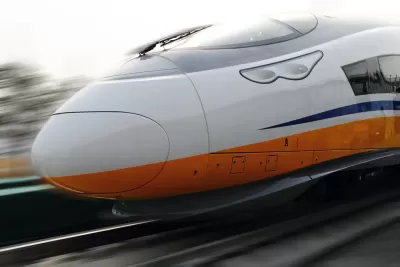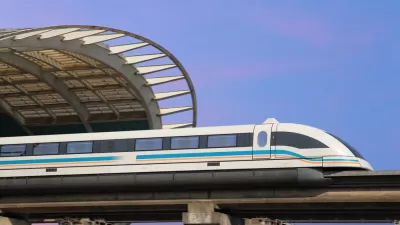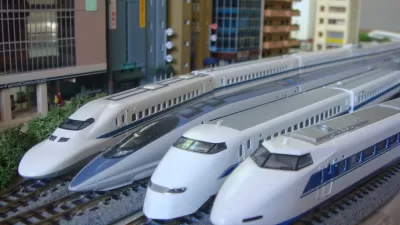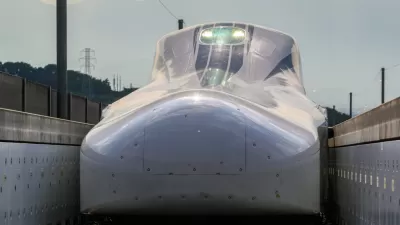The high-tech, high-speed rail system is ultimately planned to run from D.C. to New York.

Luz Lazo at the Washington Post delves into a new environmental report on the proposed Northeast Maglev line from Washington, D.C. to New York.
The report deals with the first leg of the system, a planned 40-mile route from D.C. to Baltimore. One notable update is that project officials have identified the Mount Vernon Square area as the possible end point on the D.C. side. Multiple locations are still under consideration on the Baltimore end, including Camden Yards in the Inner Harbor and the Cherry Hill neighborhood in South Baltimore. Lazo writes:
"The Cherry Hill site offers opportunity for development in an area that hasn’t seen much investment and would be more easily accessed by riders getting to the station by car because it is less congested than downtown. The site would have a direct connection to the Maryland Transit Administration’s Cherry Hill light-rail station, and project officials say there is opportunity for a shuttle service to downtown as well as a water ferry to the Inner Harbor."
The high-speed system is expected to transport commuters from Washington to New York in an hour. The trip between D.C. and Baltimore would take 15 minutes, according to the report. That leg has a projected cost of up to $12 billion. It has secured $5 billion from Japan, where magnetic levitation technology is being developed, and $28 million from the Federal Railroad Administration.
The federal environmental review process is scheduled to be completed in early 2020, Lazo reports. The project is currently on track to begin operations in 2027.
FULL STORY: D.C.’s Mount Vernon Square eyed for high-speed maglev train station

Planetizen Federal Action Tracker
A weekly monitor of how Trump’s orders and actions are impacting planners and planning in America.

Congressman Proposes Bill to Rename DC Metro “Trump Train”
The Make Autorail Great Again Act would withhold federal funding to the system until the Washington Metropolitan Area Transit Authority (WMATA), rebrands as the Washington Metropolitan Authority for Greater Access (WMAGA).

DARTSpace Platform Streamlines Dallas TOD Application Process
The Dallas transit agency hopes a shorter permitting timeline will boost transit-oriented development around rail stations.

Parks: Essential Community Infrastructure — and a Smart Investment
Even during times of budget constraint, continued investment in parks is critical, as they provide proven benefits to public health, safety, climate resilience, and community well-being — particularly for under-resourced communities.

Porches, Pets, and the People We Grow Old With
Neighborhood connections and animal companions matter to aging with dignity, and how we build can support them. Here’s a human-scale proposal for aging in place.

Single-Stair Design Contest Envisions Human-Scale Buildings
Single-stair building construction is having a resurgence in the United States, where, for the last several decades, zoning codes have required more than one staircase in multi-story housing developments.
Urban Design for Planners 1: Software Tools
This six-course series explores essential urban design concepts using open source software and equips planners with the tools they need to participate fully in the urban design process.
Planning for Universal Design
Learn the tools for implementing Universal Design in planning regulations.
City of Charlotte
Municipality of Princeton
City of Camden Redevelopment Agency
City of Astoria
Transportation Research & Education Center (TREC) at Portland State University
US High Speed Rail Association
City of Camden Redevelopment Agency
Municipality of Princeton (NJ)





























